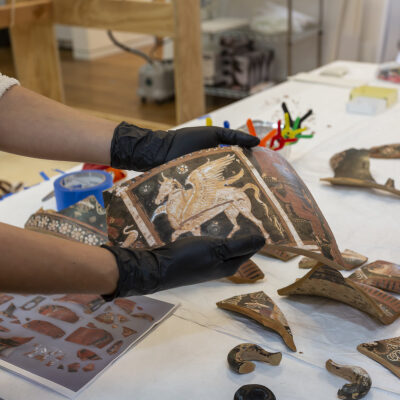
Conservation at VMFA
By preserving, conserving, and studying our collections and sharing our findings, VMFA’s Conservation team ensures that the public can continue to learn from and enjoy the objects in VMFA’s collections for many generations to come.
The Conservation Department is integral to all aspects of VMFA’s mission to collect, preserve, exhibit, and interpret art for the benefit of the citizens of the Commonwealth of Virginia. VMFA conservators examine and treat artworks for exhibitions and loans, assess the condition of incoming acquisitions, carry out preventive conservation activities, and perform scientific research into materials, fabrication methods, and the deterioration of artworks. All conservation treatment and preservation initiatives are guided by the American Institute for Conservation’s Code of Ethics and conducted in consultation with curatorial colleagues and other specialists. Conservators work closely with other departments across the museum to ensure the safety of objects while on display, traveling, and in storage.
The Goode Center
Opened in 2010, the Susan and David Goode Center for Advanced Study in Art Conservation is a vibrant training and research center. Boasting nearly 10,000 square feet of cutting-edge laboratory space, it ranks among the Southeast’s most extensive art conservation facilities. The center is equipped with advanced analytical tools such as hyperspectral imaging, infrared and multiband imaging, scanning and portable x-ray fluorescence, FT-IR and FT-Raman spectroscopy, polarized light microscopy, microfade testing, and computed x-radiography. The skilled Goode Center team includes conservators, conservation technicians, and mount makers, specializing in the preservation of paintings, objects, paper, and photographs.
VMFA’s Goode Center Conservation team aspires to be leaders in the field of art conservation and technical art history through collaborative research and scholarship with conservators, curators, researchers, scientists, and students around the globe. Conservators within the Center share research findings through engagement with the public on-site and online, lecturing nationally and internationally, in peer-reviewed publications, and through the museum’s exhibitions and statewide programs. The Center team is also dedicated to promoting diversity in the field and training the next generation of conservators through outreach, workshops, paid internships, and fellowships.
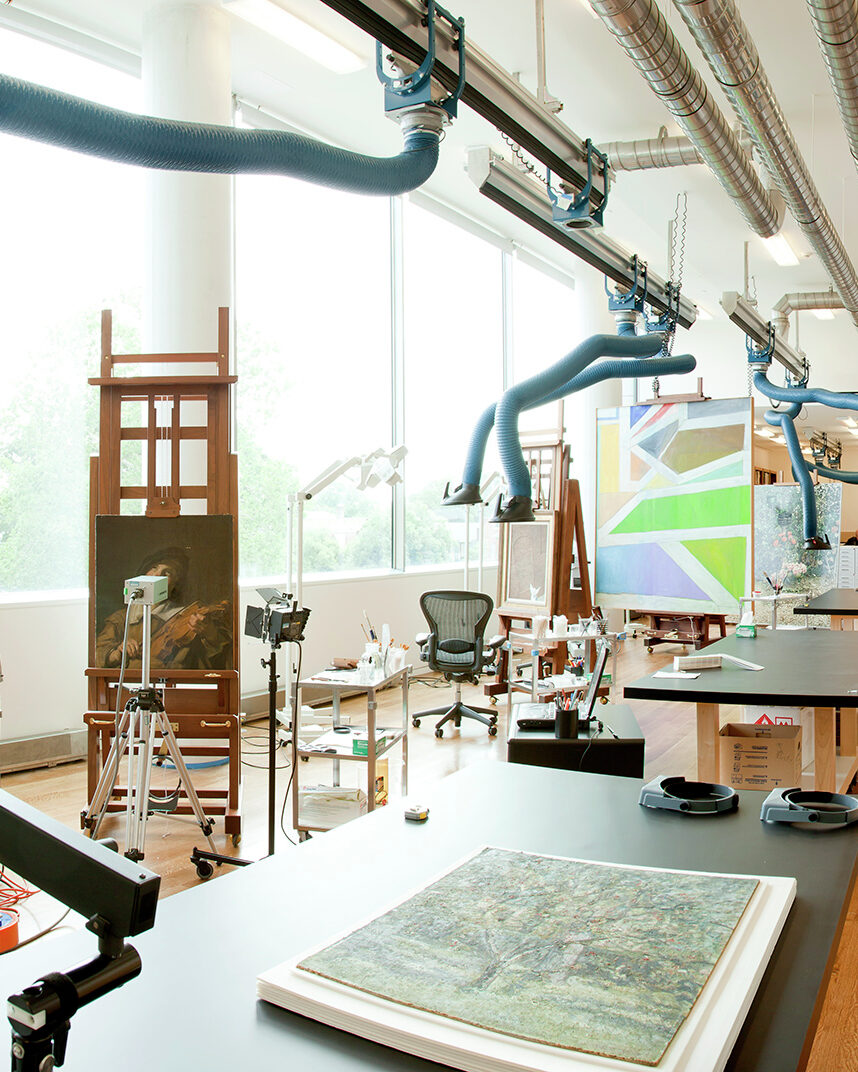
Areas of Specialization
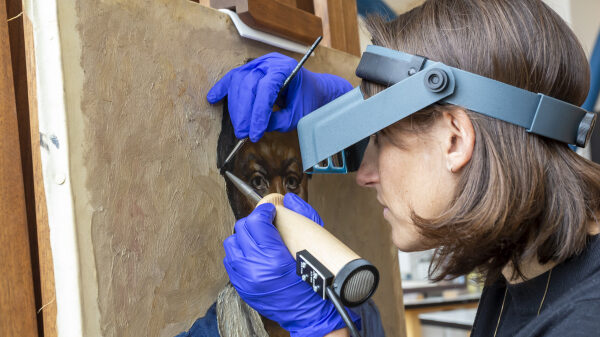
Paintings
Painting Conservation is responsible for all painted works of art on canvas, board, panel, and copper, as well as their frames. The collection contains paintings executed in oil, egg tempera, encaustic, acrylic, and mixed media, dating from the 14th to the 21st century.
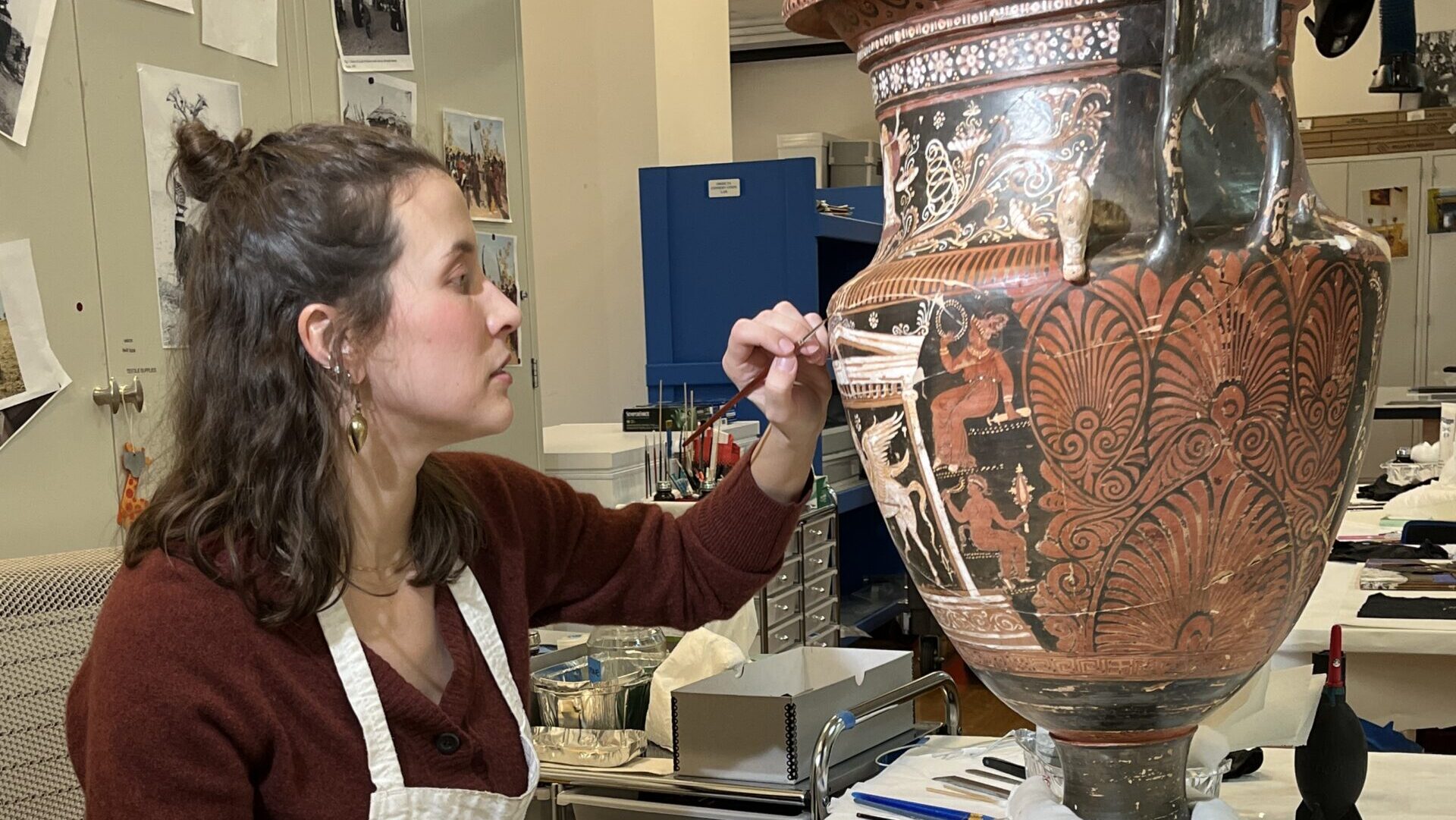
Objects
Sculpture and Decorative Arts Conservation is responsible for all three-dimensional artworks in the VMFA collection, as well as textiles and time-based media. These objects encompass a wide array of materials from all over the world, ranging from contemporary to ancient art.
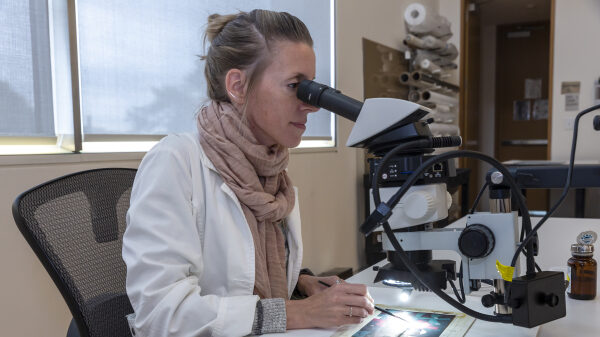
Works on Paper
Paper Conservation is responsible for all works on paper, including prints, drawings, paintings on paper, collages, photographs, books and manuscripts, parchment, papyrus, and Asian scrolls and folding screens. Paper Conservation staff also provides support for the museum’s Library and Archives collections.
History
VMFA archival records indicate that various restorers and conservators were engaged in the preservation of the collection since before the museum opened to the public in 1936. However, it wasn’t until the 1970s that the conservation program took formal shape. It began with the hiring of a part-time paintings conservator and the allocation of space for the inaugural on-site conservation laboratory.
Recognizing the pressing preservation needs of the collection, in 1984, a full-time paintings conservator joined the department. Following the inauguration of the West Wing in 1985, the paintings conservation lab found its new home in a more expansive suite. Over the next dozen years, the team expanded further with the addition of a matting and framing conservation technician, the museum’s first objects conservator, and assistant conservators in both paintings and objects specialties.
The museum’s last major expansion in 2010 paved the way for broadening the conservation program into a purpose-built, state-of-the-art suite of conservation studios now home to the Susan and David Goode Center for Advanced Study in Art Conservation. Mirroring the growing collections at the museum, paper conservation was added as a specialty in 2015 with the hiring of the first paper conservator and paper conservation technicians, followed by the addition of a conservator of photographs in 2022.
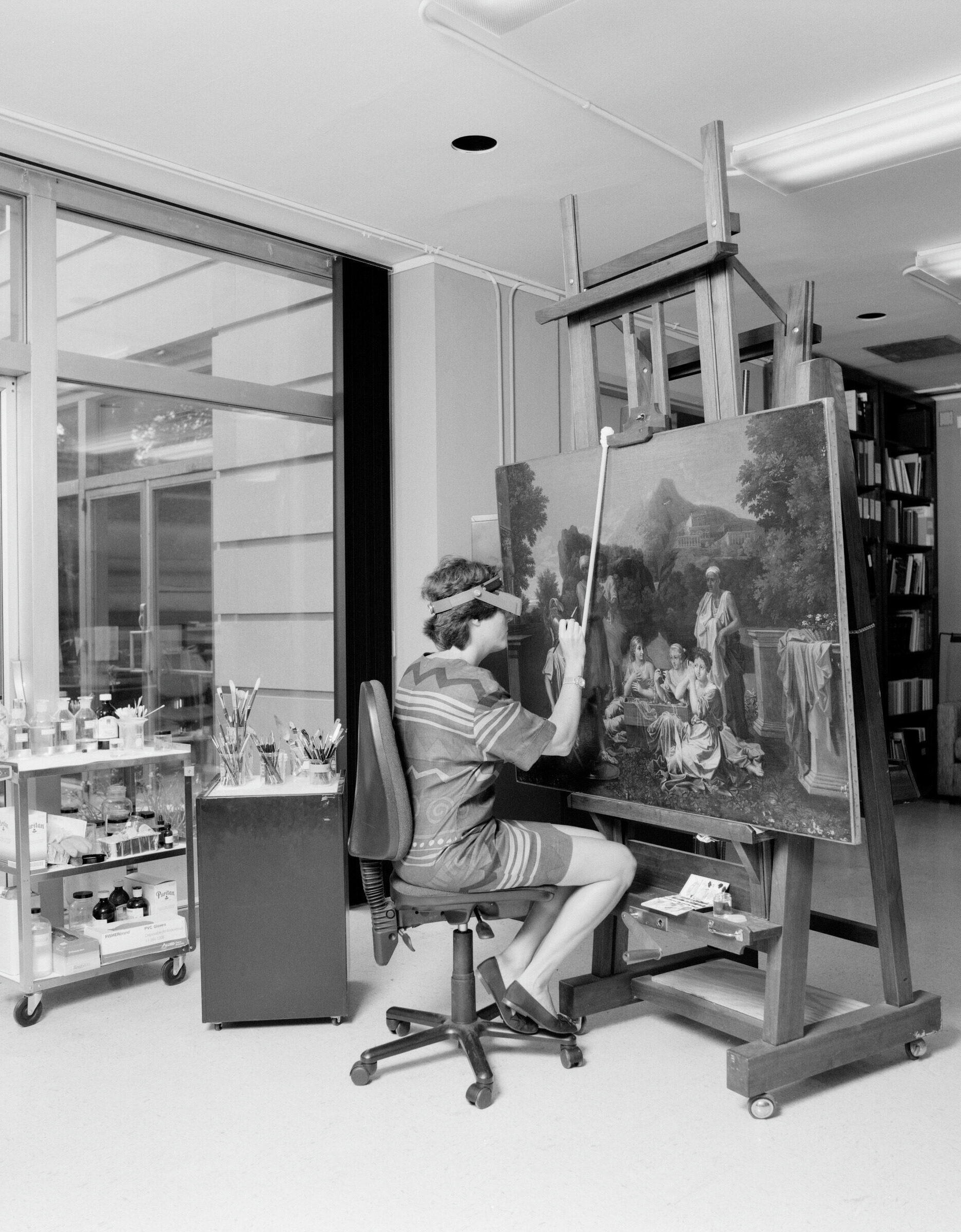
Conservation Stories
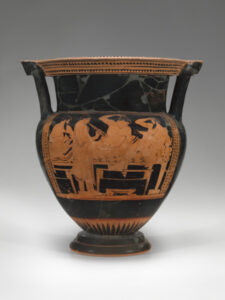
The Krater’s Story: A Tale of Provenance and Reconstruction
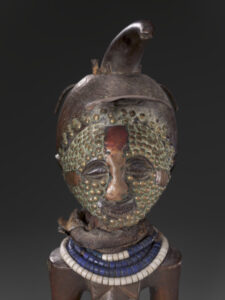
Beneath the Surface of African Art
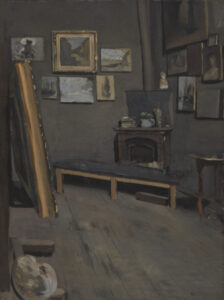
Painting Conservation Report: The Artist’s Studio
ANDREW W. MELLON FOUNDATION GRANT: CONSERVATION INITIATIVE IN AFRICAN ART
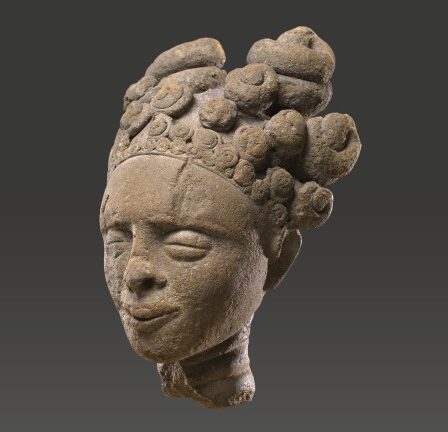
The Andrew W. Mellon Foundation has awarded the Virginia Museum of Fine Arts a $1.5 million grant to support in-depth technical examination, conservation, and art historical studies of the museum’s outstanding African art collection.
Read MoreIN THE NEWS
14th-Century Japanese Hanging Scroll Conserved with Grant from the Sumitomo Foundation
Conservation of a 14th-century Japanese scroll painting, Standing Arhat, was completed with grant support from the Sumitomo Foundation in Japan in 2022. The Sumitomo Foundation grant awarded to the museum is specifically intended for the protection, preservation and restoration of cultural properties outside Japan.
Read More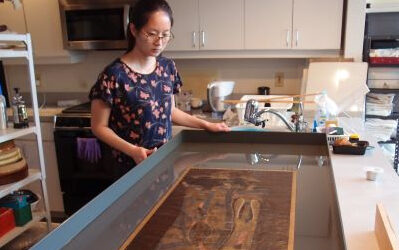
Conservation Videos
Related Resources
Discover more about Conservation on Learn!
Conservation of Works of Paper
Septimius Severus Conservation
